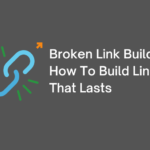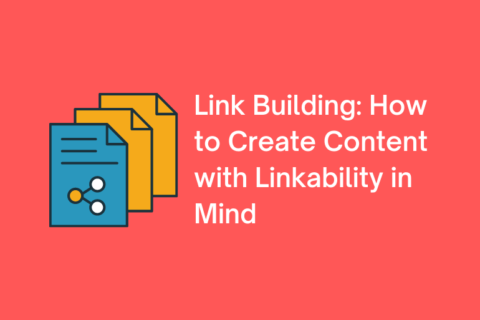The Definitive Guide to Creating a Winning Content Marketing Strategy for E-Commerce

The Definitive Guide to Creating a Winning Content Marketing Strategy for E-Commerce
- Jayson Bagio
- September 15, 2022
- 12:13 pm
- No Comments
A content marketing strategy is more than just generating and distributing content. Your approach should be strategic so that you can attract and engage your target customers, and compel a profitable action.
Elements of an Effective Content Marketing Strategy for E-commerce
A content marketing strategy will not be effective without the following elements. Let’s see why these elements are essential in building a content marketing strategy that works:
Defined Audience
The first step that you need to take is to know and define your target market. Take both demographic and psychographic data into consideration.
Demographic data are your audience’s age, gender, location, etc; while psychographic data refers to the solutions they are looking and why they need it.
Clearly Defined Product Positioning
Your product and brand positioning should have a clearly defined product positioning. That way, you can give your audience a more consistent experience. This also allows you to create similar branding and experience across all content marketing platforms.
It helps to ask yourself the following questions:
- Who are my existing and prospective customers?
- What kind of experience are they searching for?
- How do other competitors market their brands?
- What’s the unique value of my brand?
- What kind of problems does my product solve?
- Why is it a better choice over my competitors?
- How can I show my brand personality more?
Editorial Niche
Before you establish your brand as an authority in your niche, know what your media value proposition first.
What’s the unique value that you’re providing your target market? How can you stand out from the rest of the competition? Why do readers have to choose you and follow you over your competitors? What sets you apart?
Business Alignment
Your content marketing strategy should leverage your e-commerce business.
Identify the goals that your company wants to achieve and figure out how content marketing will bring you closer to your goals.
What kind of resources do you need? What results do you expect to get from this?
Strategic Execution
A strategic plan will help you focus on your goals, as well as how precisely you can achieve them.
Having a plan will help you decide what you want to achieve with your content marketing efforts, how you can better deliver that content to your potential and existing customers, and how you can better achieve and measure those goals.
7 Steps to Creating a Winning Content Marketing Strategy
Now that we’ve identified the various elements that make a content marketing strategy effective, we’ll walk you through the seven steps on how you can create a winning content marketing strategy for your e-commerce business:
Step 1: Know What Content is Working
Regularly auditing your content will make you stand out more in a world where there is mass content production.
With billions of websites and millions of blog posts floating on the internet, there is a massive amount of information that your vustomers can click on.
How do you stand out?
Well, you need to create content with a solid understanding of what works for them (i.e. how to use your best selling products). Otherwise, you’ll be wasting precious time and resources.
Step 2: Set SMART Goals
Setting SMART goals for your content marketing strategy will ensure your success later on. But what are these SMART goals, anyway?
SMART goals stand for being specific, measurable, attainable, realistic, and time-bound.
Setting these goals will help you stay focused on whatever progress you’re making. Once you set them before implementing and developing your strategy, you’re bound to get stronger results.
It also helps that you know what you want to accomplish with your overall marketing strategy. Writing down these goals before you create content will help you to take a step in the right direction, and make smarter decisions on how you can reach these goals.
Step 3: Define Your Target Customers
To be able to have a highly successful content strategy, be clear on who your customers are. That way, you can craft the right content to reach them.
Collect demographic data
The first step that you need to take is to collect the demographics of your email subscribers, followers, and website visitors.
Through various analytics, you will get the various data that you need such as:
- Gender
- Age
- Education
- Income
Gain audience feedback
To learn even more about your target customers, you have to collect various feedback.
That will help you gain insight into how readers feel about the content you’re producing, what are their pain points and urgent needs, and how you can address those needs through your content.
Create Reader Personas
Finally, after gathering relevant data and customer feedback, you can now come up with buyer personas. These help you describe who your ideal customers and readers are. That way you can better target them.
Step 4: Create an Editorial Plan
Planning your content helps you allocate your resources properly. This will help you see better why workflows are taking longer than normal, and how you can adjust your expectations accordingly.
This helps you:
- Prioritize: Through careful planning, you’ll know what the most crucial tasks are.
- Look for relevant topics: You need to look for topics that are bound to capture your audiences’ attention as they progress through the rest of the customer journey.
Step 5: Strategize Your Content Production
Before you could go on with the content creation process, think what’s the purpose behind the content that you want to come up with.
See to it that every content that you create covers every stage of the customer journey, and supporting them with every stage.
That will help you develop long-term relationships between prospective customers and your brand.
Step 6: Develop a Content Distribution Plan
Both earned and paid media are essential elements in a content distribution strategy.
Building an Omnichannel Experience: When you align your goals and the messaging of your brand across different channels, your audience will have a clear picture of who you are as a brand and what you have to offer them.
Knowing your most relevant channels: Your various social media demographics and analytics will tell you the channels that you want to engage your target customers with, as well as the ones that are just a waste of your budget.
Step 7: Optimize Your Content
Optimizing your content means that you’re making sure that it’s highly visible online. Search engines will rank content that’s highly optimized higher than the content that are not.
Here are some tips on how to optimize your content:
- Create high-quality content
- Always use headers
- Optimize the texts, images, and videos
- Use social media
- Write for users, and not search engines
- Keep your code clean and organized.
Measure and Analyze
When you measure and analyze the performance of your content, you’ll know what specific type of content connects more with them, and you’ll know what types of content to generate next.
Your audience will give you clear indications on what specific type of content attracts them the most, making it easy for you to create content that engages and intrigues them.
Over to You
Content marketing offers brands and businesses and an excellent opportunity to improve their results. Once you deliver content that is valuable, relevant, and informative to your audience, you can boost your reputation online. You can also foster a community made of loyal advocates for your brand.
Related Posts
How to Create Content with Linkability in Mind
Share on facebook Facebook Share on twitter Twitter Share on linkedin LinkedIn Is your content linkable? Linkability – …
Search
Latest Posts

How to Create Content with Linkability in Mind



Broken Link Building: How to Build Links that Last



